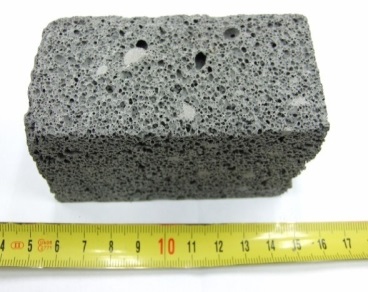Development and Characterization of Thermal Insulation Geopolymer Foams Based on Fly Ash
DOI:
https://doi.org/10.46604/peti.2020.5291Keywords:
geopolymer, thermal insulation, mechanical properties, inorganic foamsAbstract
The main purpose of the article is to present the differences in the parameters of geopolymer foams obtained in the same way, which is associated with difficulties in controlling the foaming process. Difficulties in controlling the foaming process of geopolymers are the direct reason for the lack of implementation of such materials nowadays. The article shows the results for experimental research, especially research into insulation, physical, and mechanical properties for the designated foamed materials. Microspheres (75%), sand (5%) and fly ash (20%) were used to produce foamed geopolymers. Hydrogen peroxide was the foaming agent. Heat conduction coefficients of 0.08-0.07 W/mK were obtained. The material density was obtained at the level of 363-375 [kg/m3] and the compressive strength was 520-683 [kPa]. The results showed that geopolymers can be a good alternative to conventional insulation materials, but the foaming technology should be developed so that it is stable and allows for reproducible material parameters.
References
M. Łach, K. Korniejenko, and J. Mikuła, “Thermal insulation and thermally resistant materials made of geopolymer foams,” Procedia Engineering, vol. 151, pp. 410-416, December 2016.
M. Łach, D. Mierzwiński, K. Korniejenko, and J. Mikuła, “Geopolymer foam as a passive fire protection,” MATEC Web of Conferences, vol. 247, pp. 1-6, December 2018.
E. Liefke, “Industrial applications of foamed inorganic polymers,” Geopolymere’99 Proceedings, : Institut Géopolymère, December 1999, pp. 189-200.
J. Davidovits, Geopolymer chemistry and application, 4th ed. Saint-Quentin: Institut Géopolymère, 2015.
A. N. Murri, V. Medri, E. Papa, L. Laghi, C. Mingazzini, and E. Landi, “Porous geopolymer insulating core from a metakaolin/biomass ash composite,” Environments, vol. 4, no. 4, pp. 1-13, December 2017.
B. Liguori, I. Capasso, V. Romeo, M. D Auria, M. Lavorgna, D. Caputo, S. Iannace, et al., “Hybrid geopolymeric foams with diatomite addition: effect on chemico-physical properties,” Journal of Cellular Plastics, vol. 53, no. 5, pp. 525-536, February 2017.
N. A. Jaya, Y. M. Liew, M. M. A. B. Abdullah, and C. Y. Heah, “Porous metakaolin geopolymers with tailored thermal conductivity,” IOP Conference Series: Materials Science and Engineering, vol. 551, no.1, pp. 1-5, August 2019.
G. Samson and M. Cyr, “Porous structure optimisation of flash-calcined metakaolin/fly ash geopolymer foam concrete,” European Journal of Environmental and Civil Engineering, vol. 22, no. 12, pp. 1482-1498, April 2017.
H. I. Riyap, C. N. Bewa, C. Banenzoué, H. K. Tchakouté, C. H. Rüscher, E. Kamseu, et al., “Microstructure and mechanical, physical and structural properties of sustainable lightweight metakaolin-based geopolymer cements and mortars employing rice husk,” Journal of Asian Ceramic Societies, vol. 7, no. 2, pp. 199-212, April 2019.
V. Sahu, A. Srivastava, and V. Gayathri, “Effect of lime and gypsum on engineering properties of badarpur fly ash,” International Journal of Engineering and Technology Innovation, vol. 6, no 4, pp. 294-304, September 2016.
R. V. Upadhyaya and T. G. Suntharavadivel, “Optimization of fly ash and metakaolin content in mineral based CFRP retrofit for improved sustainability,” International Journal of Engineering and Technology Innovation, vol. 9, no. 3, pp. 171-181, May 2019.
M. Nadeem, E. Ulhaq, F. Ahmed, M. Asif Rafiq, G. Hameed Awan, and M. Zain-ul-Abdein, “Effect of microwave curing on the construction properties of natural soil based geopolymer foam,” Construction and Building Materials, vol. 230, pp. 117074, January 2020.

Published
How to Cite
Issue
Section
License
Submission of a manuscript implies: that the work described has not been published before that it is not under consideration for publication elsewhere; that if and when the manuscript is accepted for publication. Authors can retain copyright of their article with no restrictions. Also, author can post the final, peer-reviewed manuscript version (postprint) to any repository or website.

Since Oct. 01, 2015, PETI will publish new articles with Creative Commons Attribution Non-Commercial License, under The Creative Commons Attribution Non-Commercial 4.0 International (CC BY-NC 4.0) License.
The Creative Commons Attribution Non-Commercial (CC-BY-NC) License permits use, distribution and reproduction in any medium, provided the original work is properly cited and is not used for commercial purposes







